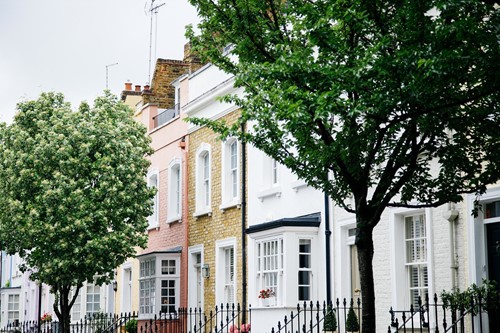
Image by StockSnap from Pixabay
A neighborhood is a neighborhood. And a business district is a business district, right? Unfortunately, it's not so cut and dry. There are actually nine major zoning types in most areas. And these can impact things like home use, home value, and property taxes. Zoning can change over time.
Let's explore the five you're most likely to encounter.
1. Commercial
Generally, this property is intended exclusively for money-making purposes.
Commercial zoning has several sub-categories that may define how the land can be used. This varies by city but may include:
Certain commercial buildings may have added restrictions such as distance from a school or residential area. As a home-buyer, it's important to consider how commercial property near you is zoned. For example, if an apartment complex may go up in that vacant lot down the street someday, this may impact whether you want to move here now.
2. Residential
Residential zoning can include a wide variety of housing types:
Whether these are allowed depends on local and community codes. For example, many city ordinances may state that mobile homes are not permitted in city limits. This may impact tiny houses as well.
Residential zoning typically prohibits "farm animals". So building a barn or keeping a cow in the back yard may be against the law. What is permitted may impact the community and home values change over time. So it's vital to consider.
3. Rural
Rural zones cover land outside a metropolitan area or in between towns. People of this property often have more control over what they do with their land. They'll typically pay less for land in these areas as well as fewer taxes. That also means that homes may appreciate less in these areas.
But keep in mind, if rural land is close to city limits, it may become residential at some point. This may increase your home value because you now have access to city services. But you'll also see property taxes rise.
4. Historic
When cities want to maintain the charm of an older part of town, they may classify it as historic. If you move here, you will have to comply with rules intended to keep an original style. But as a trade-off, you may be entitled to grants and federal tax credits. If well-maintained, a historic home can be an exciting place to live.
5. Aesthetic
Aesthetic districts are designed to maintain a unified aesthetic throughout the neighborhood. This makes the community more desirable. In theory, this keeps house values on the rise. They are often run by HOAs who may dictate for example:
Real Estate Zoning & Buying a Home
Zoning is a crucial part of the home buying decision. It influences both what you can do with the property and how well the property holds its value. For more home buying tips, follow our blog.
About the Author

Gabrielle Di Bianco
Gabrielle began her career in Real Estate in 2002. Prior to becoming a real estate agent, Gabrielle worked in the marketing/communications and manufacturing business in NYC for 18 years, having worked with both US and International clients. She is fluent in both Italian and French and is a Certified International Property Specialist.
